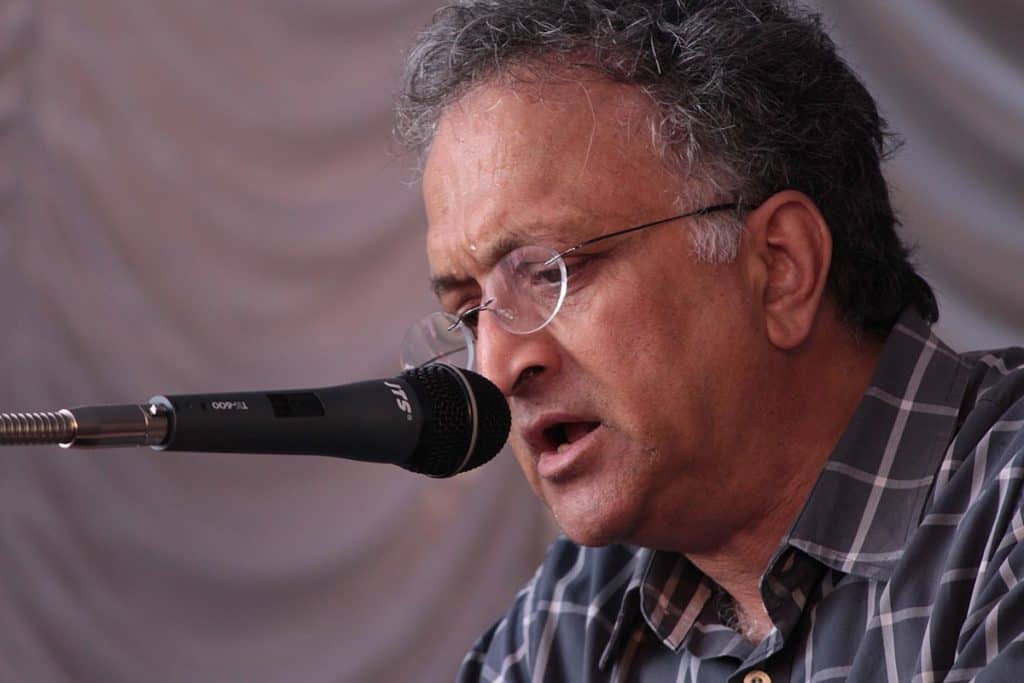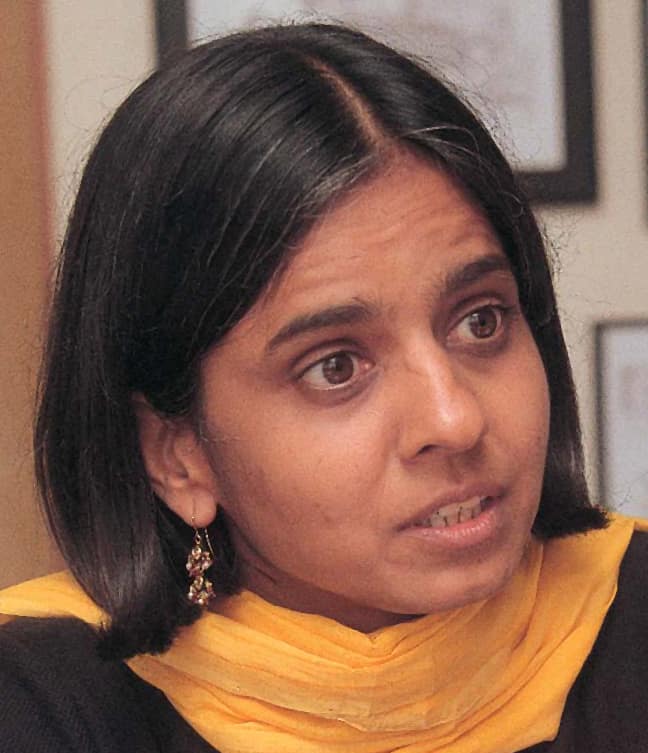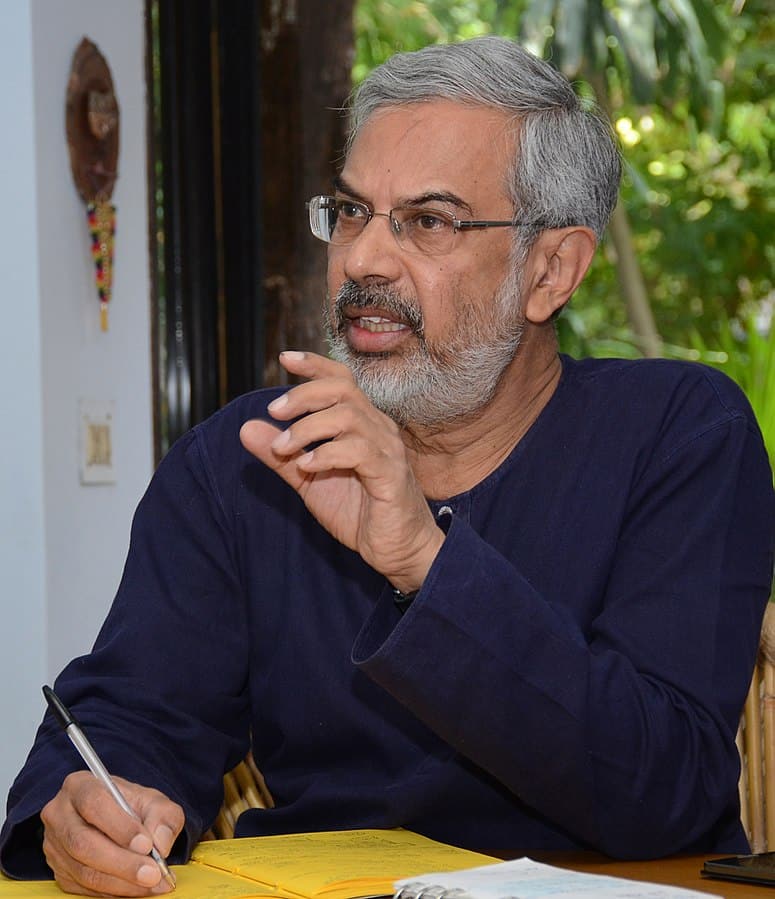‘Gandhi and Cities’ was the paradoxical title of a webinar organised by the INHAF Habitat Forum on October 1st. I say paradoxixal because it discussed deeply modern, urban worries and concerns, with reference to a freedom fighter who primarily explored rural landscapes and opposed capitalism and industrialisation.
Yet, most of Gandhi’s life was lived in urbanscapes. He had a “tender love” for London, said Dr Tridip Suhrud, Provost of CEPT (Centre for Environmental Planning and Technology) University, in his introductory speech. But how is Gandhi relevant to our cities today?

According to the first speaker, Ela Bhatt, activist and founder of SEWA (Self-Employed Women’s Association), just thinking about Gandhi is good enough to plan better cities and put his ideas into action. Delinking of ‘urban’ and ‘rural’ issues, as has been the practice for ages, is misleading and divisive, said Ela. A town is more rural than urban, she feels, due to its many migrants. City structures, layouts and services are often fashioned on rural templates, although urban architecture and design stand out.
Speaking of slums as an integral part of the city, she said that they must not be considered problems, but rather solutions for forsaken people and a unit or form of self-rule. Cities must aspire to improve the situations of all citizens, their income, access to basic services and jobs and their social status. She argued that Gandhiji always talked of citizens, not rural or urban dwellers. So how can we rethink cities, when we have not done the right thinking about them in the first place?

Ela was followed by historian Ramachandra Guha, who began by calling out the fallacy in Gandhiji’s assertion that “India lives in her villages.” India has also always lived in her cities, from the fabled cities of Hastinapura and Indraprastha to medieval Delhi and Agra, he quipped. Gandhi himself was shaped and made by cities. In the 1930s, Gandhi had said that the blood of the villages is the edifice on which the cities are built. However, cities can also be emancipatory, as Babasaheb Ambedkar found for Dalits, said Guha.
London, Ramachandra pointed out, opened Gandhi’s mind and developed his deep, ethical understanding of egalitarianism and non-violence. He lived with the English, the Christians and Muslims in London. In Durban, he slept under the same roof with a Muslim, in Johannesburg he got funded by a Parsi, Rustom. He understood the diversity of India only through diaspora. Cities made him universal, not just a parochial, successful ‘baniya’. They emancipated him in a cultural, ethical, religious, linguistic, religious, moral sense.
What Gandhi gave back to these cities was also immense. He invented the Satyagraha concept in Johannesburg, 1906 and pioneered the Ahmedabad mill workers’ protest in 1918. The first major movement was in Bombay, 1919, against the Rowlatt Act. The very concept of Satyagraha was conceived, thought out and articulated in cities. He made his epic fasts post Partition in Delhi and Kolkata and applied the ideas of pluralism, ethics and tolerance to the cities.
The mature Gandhi of the late 1920s and after forbade industrialisation. The broader environmentalism he harboured looked at concepts of decentralisation and self-sustainability. However, it was his compatriot Patrick Geddes, also born in October 2, 1854, whose ideas of Gandhian cities would be more illuminating than Gandhi’s, concluded Guha.
Sunita Narain, Director-General, Centre for Science and Environment, said that while Gandhi’s vision of a city is not clear, modern cities desperately need him, as we are drowning in garbage and the spit of our cars. Our model is most resource and capital intensive, using large swathes of land, water and forests and discharging a large amount of waste.

Sunita rued that we do not have the resources to upgrade our cities for all. While less than 10% of the people in Mumbai drive cars and occupy more than 90% of the roads, about 26% of Delhi is under roads and flyovers. Construction activity robs people of the right to walk or even cross roads safely, or breathe.
While rivers have become nullahs, we need to understand the inequity in cities to explain its shit flow. You cannot clean your rivers unless you have an affordable sewage management system and sanitation for all. We have no dream or vision of a city, no Gandhi to turn to, to ask how that city should be in order to be inclusive, yet diverse.
With COVID, the digital divide has made the socio-economic divide starker. We need to reclaim public spaces and design it for the poorest of all; we need a mobility system that is modern enough for the privileged, yet affordable for the poorest, some of whom presently cannot even ride a bus. Gandhian values of frugality, equity and environment become extremely important if we want to make cities truly livable and inclusive.
Kartikeya Sarabhai, Founder-Director, Centre for Environment Education, clarified that it’s not what Gandhi said about cities per se, but the crux of his broader thoughts on governance and living that can make our cities more sustainable.
Gandhi spoke about self-sustaining village units, which we can emulate in cities at the ward level, with the same sense of community ownership, control and responsibility. Old Ahmedabad had such communities with their own laws and self-governing structures. But today it is a sarkari city, mainly due to western influence, which divides cities into commercial and residential ‘zones’, making mobility difficult.

In 1935, Gandhi said that he would prefer trusteeship by citizens rather than the state, as the ‘violence’ of citizens is less. In 1943, Gandhi had said that Ahmedabad was dirty and men and women volunteers should clean it in a joint effort between citizens and the municipality. He had even added that if cities were made cleaner, the price of land could shoot up!
In 1940, Gandhi wrote to Hariprasad at Sewagram, that it should be everyone’s effort to remove hunger, poverty and inequality, through the key concepts of decentralisation, trusteeship, equality, participation, sanitation, non-discrimination and non-violence, which are all important tenets for an ideal city. Unfortunately, we are far from realising those principles in our cities. Even today, in 2020, a person with a Dalit or a Muslim name cannot get a house in the city, as Kartikeya concluded.
Two things which we can focus on:
Affordable Housing is currently hijacked for people mostly interested in rental income. Housing Boards need not necessarily build apartments for sale. They can rent it out on a No Profit No Loss basis.
Profit cannot be the motive of Public Transport esp. buses and local trains. Having a good Public Transport will help the poor and lower middle class in reducing rental expenses.